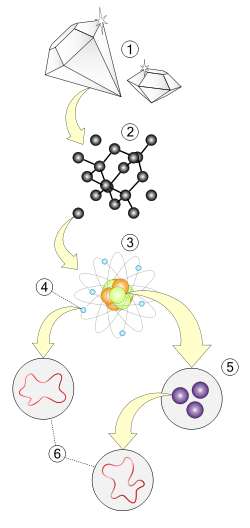It is commonly believed that
the 5 superstring theories are approximated to a theory in higher
dimensions possibly involving membranes. Unfortunately because the
action for this involves quartic terms and higher so is not Gaussian the functional integrals are very difficult to solve and so this has confounded the top theoretical physicists. Edward Witten has popularised the concept of a theory in 11 dimensions M-Theory involving membranes interpolating from the known symmetries of superstring theory.
It
may turn out that there exist membrane models or other non-membrane
models in higher dimensions which may become acceptable when new unknown
symmetries of nature are found, such as noncommutative geometry for
example. It is thought, however, that 16 is probably the maximum since
O(16) is a maximal subgroup of E8 the largest exceptional lie group and
also is more than large enough to contain the Standard Model.
Quartic integrals of the non-functional kind are easier to solve so
there is hope for the future. This is the series solution which is
always convergent when a is non-zero and negative:

In the case of membranes the series would correspond to sums of various membrane interactions that are not seen in string theory.
Compactification
Investigating theories of higher dimensions often involves looking at the 10 dimensional superstring theory and interpreting some of the more obscure results in terms of compactified dimensions. For example D-branes are seen as compactified membranes from 11D M-Theory.
Theories
of higher dimensions such as 12D F-theory and beyond will produce other
effects such as gauge terms higher than U(1). The components of the
extra vector fields (A) in the D-brane actions can be thought of as
extra coordinates (X) in disguise. However, the known symmetries including supersymmetry currently restrict the spinors
to have 32-components which limits the number of dimensions to 11 (or
12 if you include two time dimensions.) Some commentators (e.g. John Baez et al) have speculated that the exceptional lie groups E6, E7 and E8
having maximum orthogonal subgroups O(10), O(12) and O(16) may be
related to theories in 10, 12 and 16 dimensions; 10 dimensions
corresponding to string theory
and the 12 and 16 dimensional theories being yet undiscovered but would
be theories bases on 3-branes and 7-branes respectively. However this
is a minority view within the string community.
Since E7 is some sense F4 quaternified and E8 is F4 octonified, then the 12 and 16 dimensional theories, if they did exist, may involve the noncommutative geometry based on the quaternions and octonions
respectively. From the above discussion it can be seen that physicists
have many ideas for to extend superstring theory beyond the current 10
dimensional theory but so far none have been successful.
Kac-Moody algebras
Since strings can have an
infinite number of modes, the symmetry used to describe string theory is
based on infinite dimensional Lie algebras. Some Kac-Moody algebras that have been considered as symmetries for M-Theory have been E10 and E11 and their supersymmetric extensions.

























No comments:
Post a Comment